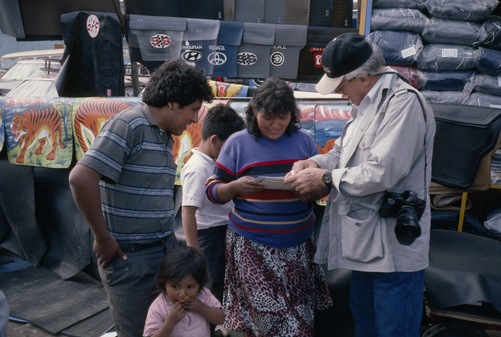I saw this picture in National Geographic some years ago. It stood in my mind and I recalled it at different times. Its caption read that this little boy was inconsolable after a taxi killed his flock. I remembered his face, his clothes and a strong feeling of how important these sheep must have been for him and his family. He must have spent so much of his time with them.
I didn’t remember anything else about, nor did I know how to find it again. But I ran into it accidentally and discovered that this little boy and his story stood in the mind of many others like me. I saw people writing and describing it, mentioning where they first saw it and asking how they can find it again.

The picture was taken in 1981 by William Albert Allard and after it was published in National Geographic in March, 1982, the magazine received an enormous amount of letters from the readers. And not only letters but also money. Eduardo Condor Ramos (that’s the little boy) got a new flock. And the rest of the money, which apparently were quite some, was used for Peruvian schools.
The picture was included in one of the National Geographic Greatest Portraits collection. And below, you can see William Albert Allard showing the well known picture to grown up Eduardo and his family.
This is one of the most touching stories I know about a picture that did not generalize life and children’s condition in Peru or anything else that usually comes handy when seeing a photo from somewhere else. Generalizing pictures claim a certain ‘know-it-all’ about life in a certain place, even though they’re only one shot in one place at one particular time and taken by one particular photographer. Such images usually lose the focus on that particular moment and that particular someone looking at the camera and become iconic representations of something too broad to grasp. Allard’s picture only told a story. Of a little boy. The little boy in the picture. And that story felt personal enough to make people do something and change something, as if that little boy crying was their own.





















